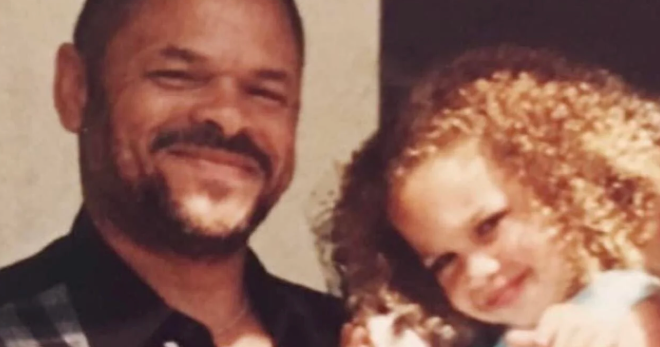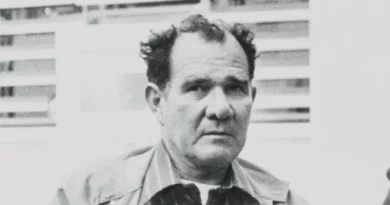Unsolved Murder of J.C. McGhee in Bridgeport Ohio
On July 11, 2002, the town of Bridgeport, Ohio woke to a crime that would echo through two decades of questions and grief. John Cornelius McGhee, known to friends and family as J. C., was shot and killed at the doorway of his home. The homicide shocked a tight knit community that sits along the Ohio River, just across from West Virginia, where neighbors tend to remember faces for years and where the routine soundscape of mornings rarely includes sirens. In the years since, the case has endured as an unsolved killing, a painful marker for a family that has never stopped asking what happened and why.
The Man Behind the Initials
John Cornelius McGhee was more than a set of initials and a headline. He was a father, a son, and a man with complicated chapters in his life. Those who knew him remember a straightforward presence and a protective streak for the people close to him. He had friends in both Bridgeport and the nearby communities that span the river valley, and he carried the kind of local familiarity that comes from years of living in the same place. When people speak about him, they reach for everyday details rather than big pronouncements. They recall a smile, a way of greeting, and a person who was easy to recognize around town.
Bridgeport, Ohio And The Setting Of The Crime
Bridgeport is an old river town with narrow streets, aging houses, and a practical rhythm shaped by work schedules and school calendars. The neighborhoods are compact. Homes sit close to one another, the kind of arrangement where a door opening or a car pulling up can be noticed from a porch next door. On the morning of the killing, this proximity would matter. The home where J. C. lived was not hidden or remote. It was a place framed by the ordinary signs of life, a mailbox at the curb, a small yard, and a front entry that, like many in the area, stood only a few steps from the sidewalk.
The Morning Of July 11, 2002
The timeline begins in the early part of the day. It was summer, already warm even in the morning hours, with the river air moving slowly between houses. At some point that morning, a knock or a noise drew J. C. to the door. What followed happened in a flash. A gunshot. A disturbance that caused calls for help and drew first responders swiftly to the scene. The pace of the next minutes is easy to imagine because it repeats across similar tragedies. Law enforcement secures the perimeter, neighbors gather behind the yellow tape, and paramedics work in a tight space where every second is precious. Despite the urgency, the wound was fatal. The doorway that should have framed a simple exchange became the boundary where a life ended and a mystery began.
First Response And The Crime Scene
Detectives and uniformed officers arrived to find a scene that, at first, seemed deceptively narrow. A single point of entry. A body at or near the threshold. The physical evidence would begin at the door and extend outward along the path of whoever pulled the trigger. Investigators photographed the entry, documented shell casings if any were recovered, marked scuffs, footprints, or disturbances in dust, and collected what trace they could. Scenes like this can feel both overexposed and underlit. Overexposed because the door is a public space and neighbors may have crowded nearby before the area could be sealed. Underlit because a shooter who acts quickly can leave behind very little that survives the first minutes after the gunfire.
Theories That Emerged
In the first wave of questioning, two broad theories took form. One viewed the shooting as a targeted act tied to the victim’s personal history or to prior conflicts that had not fully cooled. The other framed the homicide as the violent edge of a burglary or a home invasion gone wrong. The location of the wound, the position of the body, and the point of encounter at the door support both possibilities. A targeted shooter might approach to confirm identity and deliver a close range shot. A home invader might knock to lure the occupant into view or force a quick confrontation. Each path leads investigators to different sets of questions and different clusters of potential suspects.
The Investigative Challenges
Doorway shootings are difficult cases. They often unfold within a few seconds, leaving little time for witnesses to capture more than fragments. The shooter may wear a hat or pull a hood up to disrupt facial recognition. The sound of a single shot can confuse direction, especially when it echoes between close houses. Many such crimes leave behind no obvious fingerprints and no usable DNA. If surveillance cameras exist, they might point the wrong way or lack the resolution needed to make a positive identification. In 2002, home camera coverage was far rarer than it is today, and police could not rely on a network of private doorbell devices to reconstruct street movements.
Family Grief And A Daughter’s Determination
For the McGhee family, the clock did not stop when the scene cleared. Grief does not resolve with a funeral or a memorial. It keeps time in anniversaries and in the unanswered questions that live inside daily routines. Out of that loss grew a long running push for answers. J. C.’s daughter, Madison, became the leading voice. She read what records she could, met people who remembered the day, and asked again and again for new information. She spoke publicly, rebuilt the case narrative from fragments, and invited people who had been silent to share what they had seen or heard. That persistence brought the case fresh attention and reminded both the community and law enforcement that the file was not closed morally, even if it was cold practically.
Reconstructing A Morning From Fragments
Working from consistent facts, a coherent reconstruction takes shape. It was July 11, 2002, at the family home in Bridgeport. The shooting happened at or just inside the doorway. There was no long pursuit through rooms, no hours long struggle, no long distance exchange of gunfire. The event was tight, the interval was short, and the shooter left quickly. People nearby heard the report. First responders arrived, but the injury was beyond emergency care. In cases like this, the crucial moments often come before the shot is fired and after the shooter leaves. Before the shot, any unusual vehicles, unfamiliar pedestrians, or phone calls may point to premeditation. After the shooter leaves, the direction of flight, the speed of departure, and the presence of a waiting driver can reveal whether this was a lone decision or a coordinated act.
What Evidence Can Still Matter Years Later
Even with the passage of time, certain evidence can break a case. A witness who withheld a detail out of fear or loyalty can decide to speak, and that single detail can align with a small item in the file that never fit until then. A firearm recovered in a separate case can be ballistically matched to the round that killed J. C., which can open an entirely new path of questions. Someone who participated at the margins of the crime can confess under the weight of years. Advances in forensic analysis can extract information from material that seemed unpromising in 2002. Most importantly, shifting relationships can loosen the bonds that kept people quiet. A move, a breakup, a loss of trust, or a change in conscience can transform silence into testimony.
The Human Cost Of Unsolved Crime
When a homicide remains unsolved, the harm does not stand still. It spreads. It affects children who grow up with a parent missing and with a story that begins and ends at a door. It affects parents who mark years by birthdays and anniversaries that remind them of what was taken. It affects neighborhoods where residents hold a mental map of places marked by violence. The absence of an arrest carries its own risk. People who believe that no one is accountable feel less safe. They withdraw a little. They watch each other with a touch more suspicion. That is why families push publicly, why they call for tips, why they refuse to let a name become a statistic. They are not only seeking a prosecution. They are fighting to restore the sense that truth can still be found.
Community Memory And Local Knowledge
Small communities remember in layers. The official record holds case numbers, reports, and evidence logs. The unofficial record is stored in conversations, in the notes of local reporters, and in the memories of people who lived on the street that summer. Someone remembers a car that did not belong. Someone else remembers a person walking up the block who looked like they were trying not to be seen. Another person recalls a rumor that made the rounds after the funeral and then faded. When those fragments are gathered with care, they can revive a case that seems frozen. The key is creating a safe space where people can share what they know without fear of retaliation and without the worry that they will be blamed for not coming forward earlier.
A Measured, Fact First Narrative
The trustworthy outline is simple and stark. Who was killed. Where it happened. When it occurred. How it was carried out. The motive remains uncertain. The person who pulled the trigger has not been held to account. The unanswered questions are obvious. Why was J. C. targeted that morning. Was it retaliation. Was it a planned act carried out by someone who knew his routine. Was it a violent spillover from another event in the neighborhood. Was there a getaway driver or did the shooter leave on foot. These questions are not speculative flourishes. They are the practical prompts that guide a responsible reinvestigation.
How A Cold Case Can Warm
Cold cases move when several forces converge. Public pressure renews attention. Media interest brings in tips. A family advocate organizes information and pushes for transparency. A detective with time and authority revisits the file with fresh eyes. Technology upgrades make once silent evidence speak. While there are no guarantees, the pattern is familiar. A case can go from dormant to active in a matter of weeks if a credible tip lands on the right desk. The lesson is that time alone does not solve anything. People do. People who decide that what they know matters, and that the cost of silence has grown too high.
A Call For Information
If you lived in or around Bridgeport on July 11, 2002, and you recall a detail that seemed small then but now feels important, share it. If you heard a story in the weeks after the homicide, write it down and pass it to an investigator. If you once protected someone by staying quiet, consider whether the person you protected deserves that protection now. Cases like this hinge on thin threads. A partial plate number. A first name. A description of clothing. The sight of a car turning the corner faster than it should have. Any of these can be the missing piece that allows the known facts to lock into place.
The Legacy Of A Life Cut Short
At the center of all these paragraphs is a man who should be remembered for his life as much as for the way it ended. The legacy of John Cornelius McGhee is present in the endurance of his family and in the determination of a daughter who refused to accept a permanent void where answers should be. When people speak his name, they do not simply revisit the moment of violence. They affirm a continuing promise to seek accountability. That promise gives shape to the hope that one day there will be a definitive account of who came to the door, why the gun was raised, and how justice can still be done.
Discover more from City Towner
Subscribe to get the latest posts sent to your email.




